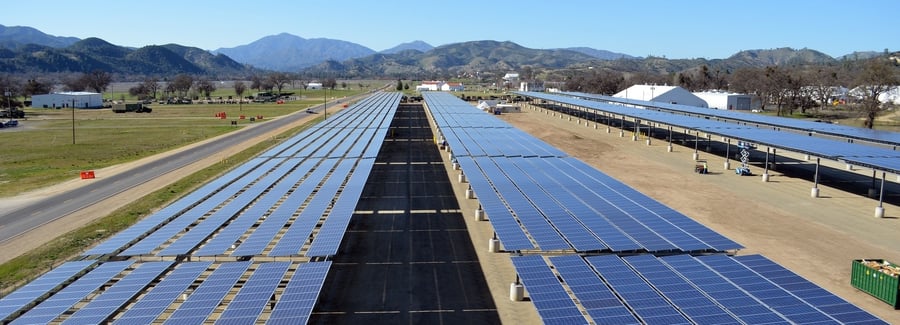
In one of the most hopeful moments in years for advanced energy, the major forces in California politics – Governor Jerry Brown, leaders of the Senate and Assembly, labor, the environmental community, and advanced energy businesses – are coming together to extend the state’s landmark greenhouse gas reduction law, AB 32, which expires in 2020. That law calls for the state’s GHG emissions to be reduced to 1990 levels. With that goal clearly within reach, the question became: what’s next? In his inaugural address in January, Gov. Brown called for new targets: reducing GHG levels to 40% below 1990 levels by 2030 and 80% below 1990 levels by 2050. It is behind these goals that California’s political stars now seem to be aligned.
Bills have been introduced in the Assembly and Senate to set carbon-reduction goals, as laid out by Gov. Brown, and prescribe the components to get there: 50% renewable energy on the electricity grid, 50% increase in the goals for building energy efficiency, and 50% reduction in petroleum use in the transportation sector, all by 2030. Adding to the mix are bills to increase direct access to renewable energy for commercial customers, provide incentives for and regulation of electric vehicle charging infrastructure and hydrogen fueling stations, promote more efficient use of energy in water treatment, among others. It’s a busy year: AEE is tracking over 100 bills for our California Business Council!
Now roughly midway through the 2015 legislative session, bills that have a hope of being enacted this year have passed out of their “house of origin” and moved to the other side of the Capitol for consideration. Assembly Members and Senators earlier this week passed the bulk of the 2015-16 budget and are getting ready for their annual July recess. So where do things stand?
SB 32, authored by Sen. Fran Pavley (author of AB 32, the climate law being extended), would set 2030 and 2050 targets for GHG reductions. A separate bill by Assembly Speaker Toni Atkins, AB 1288, would remove the 2020 expiration on the existing GHG-reduction programs being administered by the California Air Resources Board (CARB) without setting the specific targets contained in SB 32. Both passed their respective houses by considerable majorities, though not without opposition from some traditional business interests.
SB 32 provides clear targets but little specificity on how to get there. That job falls to a slew of bills in both houses that would define reductions from specific sources of GHG emissions.
SB 350, authored by Senate President pro tempore Kevin de León, is an omnibus measure covering 2030 targets for the electricity sector (50% RPS), transportation (50% reduction in petroleum use) and the built environment (50% increase in already planned improvements in building efficiency). On the Assembly side, each sector is addressed in separate bills: AB 645 (Williams) covers the RPS; AB 793 (Quirk), AB 802 (Williams) and AB 1330 (Bloom) all address energy efficiency; and AB 692 (Quirk) and AB 808 (Ridley-Thomas) address transportation fuels. Between now and August, we will find out which of these bills the leadership is going to use as main vehicles for moving these critical policies forward.
Missing from the mix is a place for various advanced energy technologies that have emerged since the original RPS and GHG laws were passed nearly a decade ago and that can help California reach these ambitious goals. Distributed generation (largely rooftop solar), storage, demand response, fuel cells, anaerobic digesters, even electric vehicles, whose batteries can be used by charging networks to provide grid services such as voltage support and frequency regulation, can all play important roles in meeting the state’s GHG-reduction targets. AEE is working with legislators on amendments that would allow these technologies and others that come to market between now and 2030 to be an integral part of a high-performing electricity system.
Considerable obstacles remain. Despite California’s reputation for being on the cutting edge of GHG-reduction policies and the advanced energy technologies that enable those policies to succeed, red flags have been raised by predictable parties. The California Chamber of Commerce has deemed most of these bills to be “job killers,” a label they have used to doom legislation they don’t like with an astonishing 90% success rate. We’ve heard this before – when the original RPS was being debated, when AB 32 was first proposed, when the cap and trade program was implemented and later when transportation fuels came under the cap, but none of the doom and gloom has ever come to pass.
We remain hopeful that, when the facts come to light, the Chicken Little refrains will be seen for what they are. The AEE Institute’s California Employment Survey revealed over 430,000 advanced energy jobs in the state last year, with employers planning to add 17% more jobs this year. California has demonstrated over and over that its energy and climate goals can drive economic growth.
Sign up for a free 14-day trial of PowerSuite, AEE's premier tool to search state legislation, by clicking below.
Featured image: Solar project at Fort Hunter Liggett installed in 2013. Courtesy of the U.S. Army Corps of Engineers.
